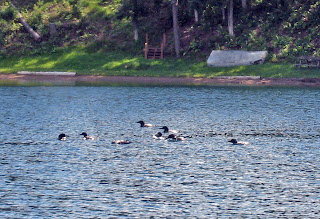 | ||
| Cabbage palms tolerate salt water inundation |
Plants in the tidal estuary have plenty of water, but it is salty and they really need fresh water. As with the ancient mariner, finding a drop to drink is difficult. Stuck in a place regularly drenched by salt water, they need adaptations to deal with this hardship. As it turns out, the adaptations they have developed mirror those developed by plants living in deserts.
Move upstream to tidal freshwater swamps and you will find plants dealing with other problems. Drenched most of the year, their roots are encased in muck usually deficient in oxygen and they face a chemically difficult environment. They must deal with too much fresh water.
Move upstream some more and the problem of perennially saturated soils decreases as the frequency and duration of flooding decline. More kinds of plants thrive as water availability transitions from mostly stressful to nearly optimal. Water availability gradually becomes less of an issue, as in the upper floodplain forests, where the results of competition may hinge on other issues. Among these, tolerance for shade and fire are prime examples. And, of course further toward the uplands water may become unreliable and again may pose an issue for the things that live there. In sandhills in the Suwannee basin, lack of reliable fresh water may result in communities dominated by scrubby oaks and short-lived sand pines.
The adaptive mechanisms plants develop to deal with lack of water and those making them tolerant of shade are, for the most part mutually exclusive. The results of this dichotomy can be seen all around us, but this is a topic for a future blog. We’ll have one about the role of hybridization too, but we will need to do more boning up before we are ready to post that one. Stay tuned.
 |
| Glasswort, a tiny wetland plant resembling cacti in its adaptations |



